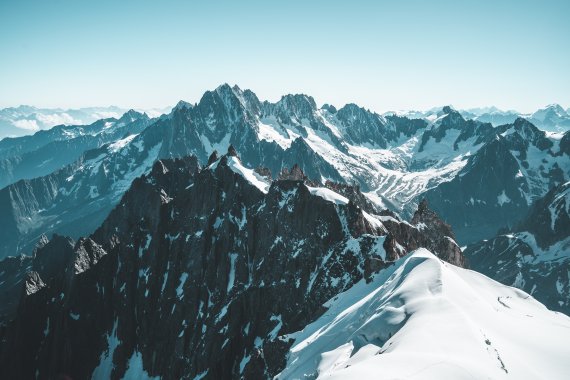
If you were to look at a map from the end of the 16th century, Mont Blanc would probably already be on the map. However, you would still have to look for it here under the name "Montagne Maudite" - the cursed mountain. For many centuries, the mountain was considered by the people of the region to be a stronghold of evil. Ghosts were suspected under its glaciers, which should not be disturbed. And dragons? There were dragons too, of course.
If you read the news from today, the question often arises whether the people of that time were perhaps not so wrong. Although neither ghosts nor dragons have been sighted, dozens of climbers die every year, especially in the Mont Blanc massif. They are buried under avalanches of snow while climbing, fall into the depths with overhangs or simply die of hypothermia or overexertion.
But history cannot be turned back, and only very few people would seriously want to do so. The history of mountaineering on Mont Blanc - which is also considered the beginning of modern alpinism - begins in the middle of the 18th century. By then, the mountain had already been surveyed and had earned the title of the highest peak in Europe - a superlative that still arouses desires today. The hunt for the summit began in 1760, spurred on by the Swiss naturalist Horace-Bénédict de Saussure, who not only offered a prize for the first ascent, but also attempted it himself. Like many other mountaineers, he fails, which is probably mainly due to the fact that one always starts from the bottom. Because a night on the "Cursed Mountain"? So far, that's out of the question.

It was not until 1786 that the local mountaineer Jacques Balmat, born in Chamonix in 1762, suffered a momentous mishap: he became separated from his group and was forced to stay at around 4,000 metres. He bivouacs, survives and learns. Only a few weeks later, on August 7, 1786, he finds a like-minded person in Michel-Gebriel Paccard and climbs with him to an altitude of about 2,300 meters. The following day, early in the morning, the men continued their tour. The result: at 6:23 p.m., the first two people stand on the summit of Mont Blanc, which incidentally still belonged to the Kingdom of Sardinia at the time. Four years later, Balmat also shows his gratitude to the Geneva scientist de Saussure and climbs the highest Alpine peak together with him.
The mountain friends who set off today in the direction of the summit are counted in hundreds. Even parents with their underage children set off. This is probably also due to the good infrastructure, which allows a relatively easy ascent - and thus often enough leads to overestimating oneself. 4,810 meters of altitude remain, even if you are not the first.
From Italy and France - the mountain is in the middle - there are several routes that are considered common today. The main route is probably the ascent in the northwest, which most start at just under 2,400 meters of altitude. This is where the cogwheel railway "Tramway du Mont-Blanc" ends, starting in the French village of Le Fayet, some 12 kilometres away. From the vantage point at the cogwheel railway, the route ends via the Bosses ridge to the summit.
In addition to other routes, especially from the neighboring Aiguille du Midi, which can be reached by cable car, experienced climbers can also try alternative climbing routes of high difficulty. In this way, they escape the mass activity that extreme mountaineer Arved Fuchs castigated in Focus in 2012 with the words, "nature is being degraded to a kind of amusement park". At the time, nine climbers had just died again in an avalanche on Mont Blanc. It is the mountain with the highest accident statistics worldwide. Unfortunately, many climbers underestimate the demanding ascent.
 OutDoor by ISPOOutDoor in transition
OutDoor by ISPOOutDoor in transition
- ISPO awards
- Mountain sports
- Bike
- Design
- Retail
- Fitness
- Health
- ISPO Job Market
- ISPO Munich
- ISPO Shanghai
- Running
- Brands
- Sustainability
- Olympia
- OutDoor
- Promotion
- Sports Business
- ISPO Textrends
- Triathlon
- Water sports
- Winter sports
- eSports
- SportsTech
- OutDoor by ISPO
- Heroes
- Transformation
- Sport Fashion
- Urban Culture
- Challenges of a CEO
- Trade fairs
- Sports
- Find the Balance
- Product reviews
- Newsletter Exclusive Area
- Magazine




